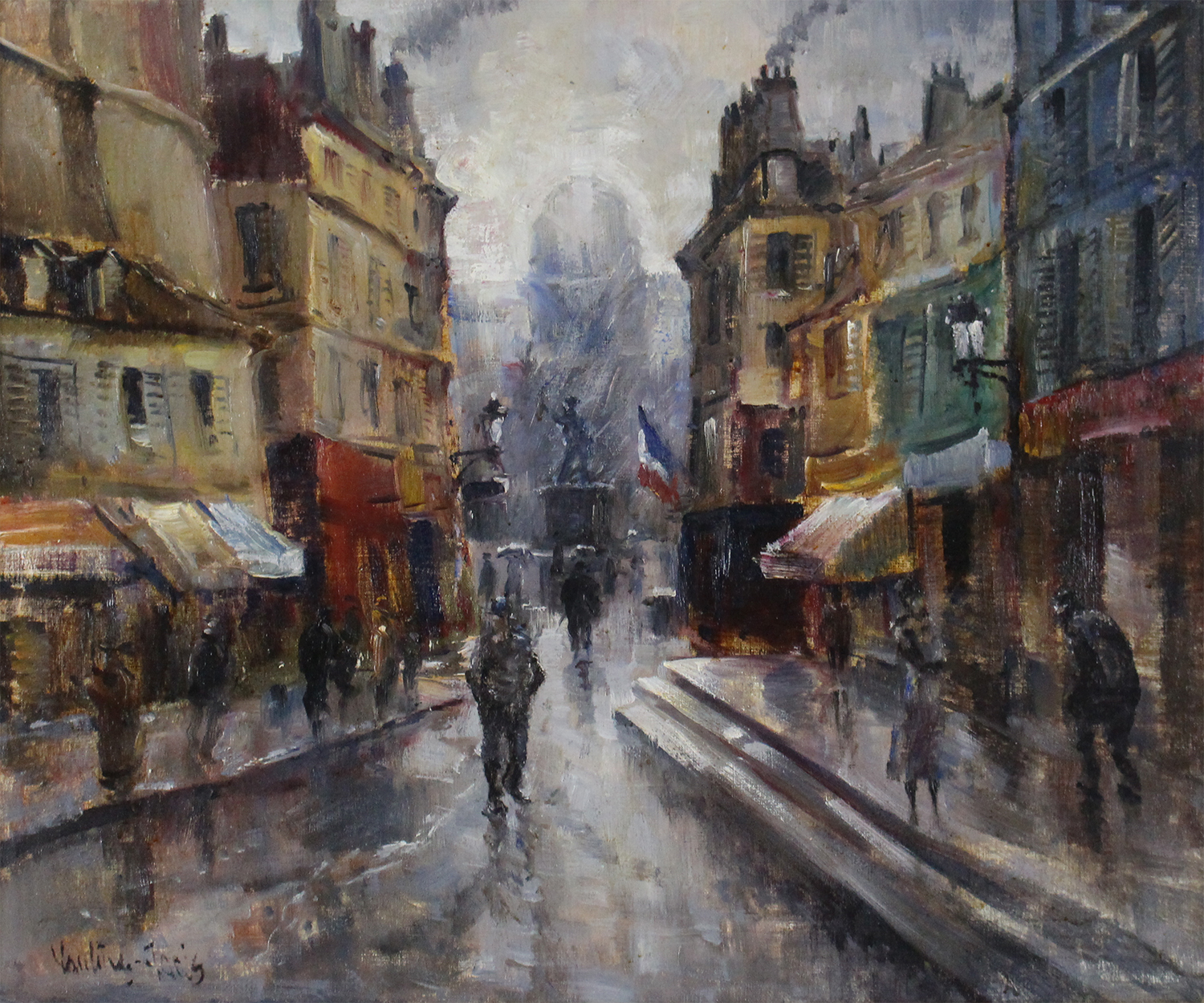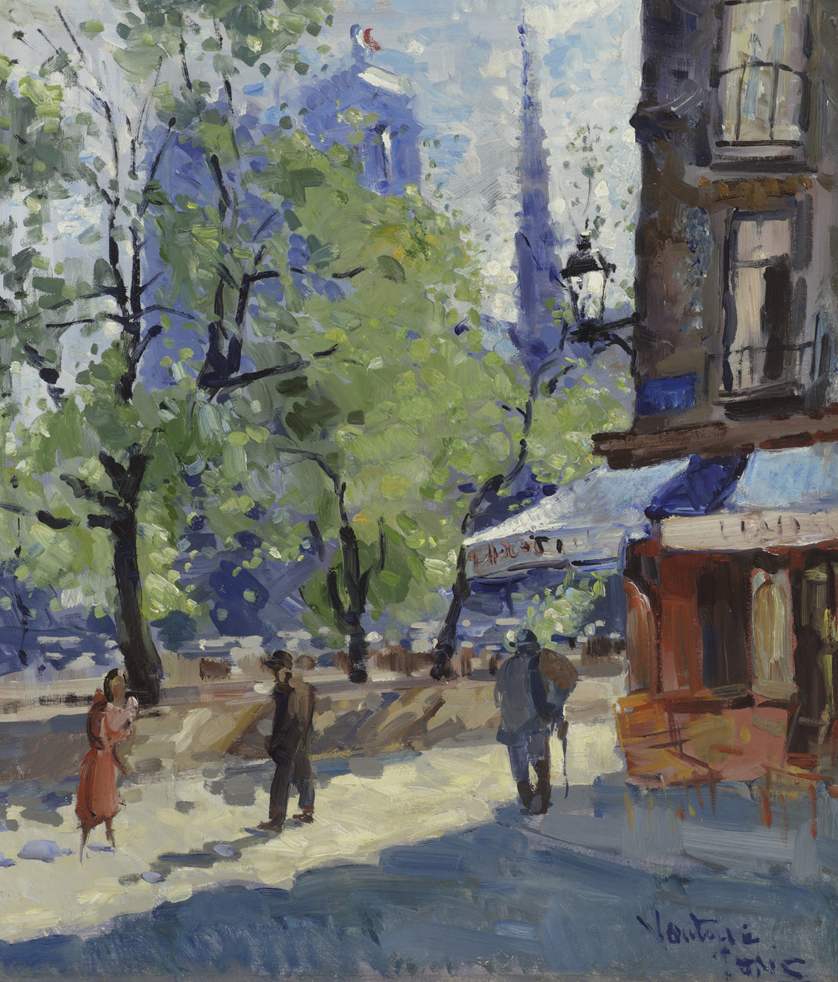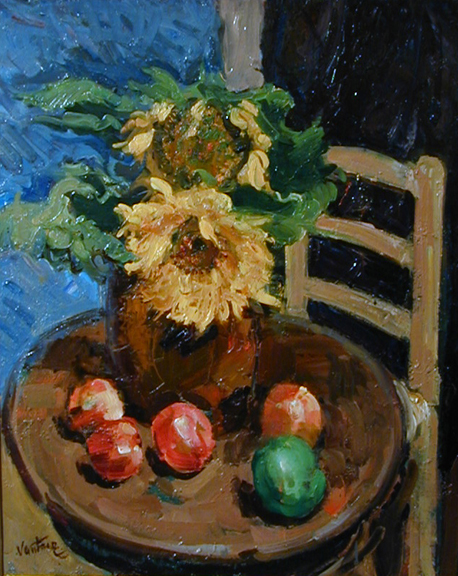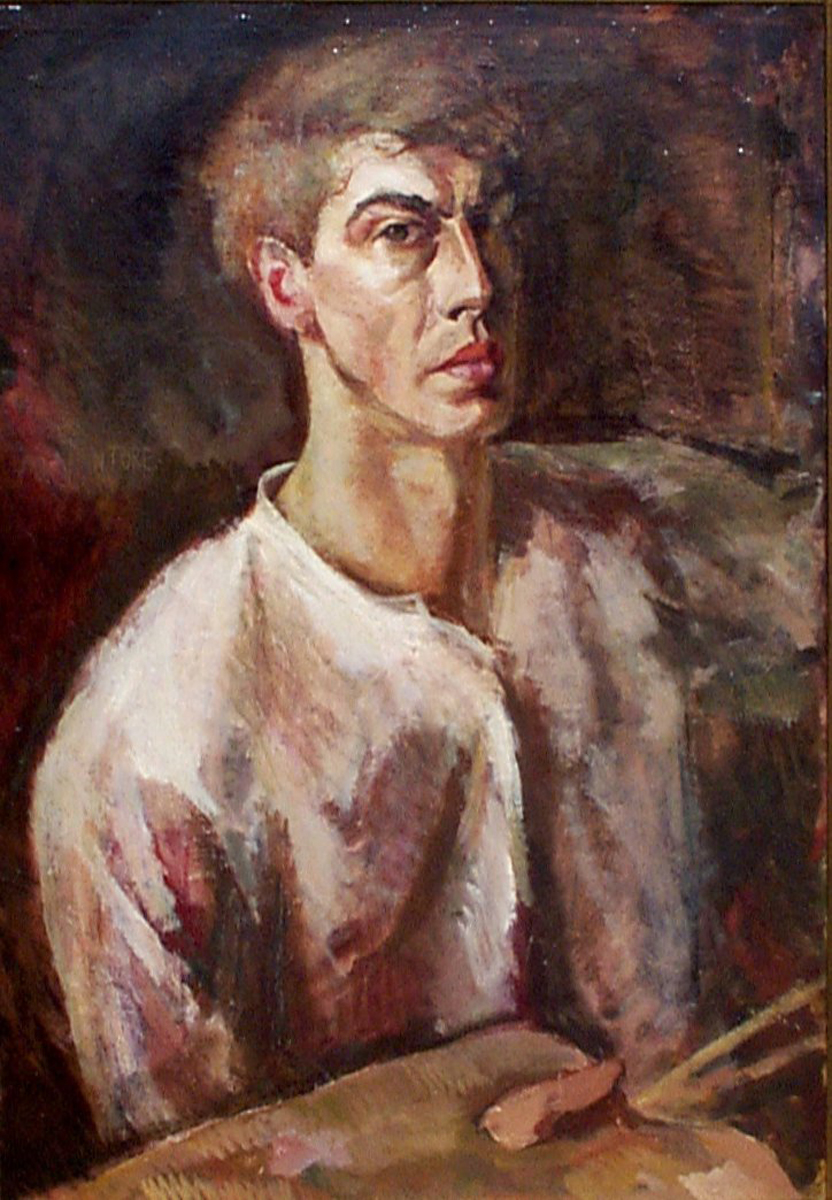SELECT SOLD
Eric Mogens Christian Vantore was born March 16, 1895 to Danish parents in Copenhagen, Denmark where he was also raised. His father, painter Hans Christian Vantore (1861-1928), studied under P.S. Kroyer and Lauritz Tuxen who were both central figures in the Skagen Plein Air School, the most influential art movement in Denmark at the time. Mogens’ mother was the daughter of the well-known French art dealer P.B. Le Fleure.
With this artistic background Mogens was in contact with many well-known artists of the time and so became motivated to paint at an early age. At 14, he started formal training at the Technical School in Copenhagen where he was inspired by the Impressionist School, mainly Gauguin, Van Gogh and Cezanne. His strong palette of greens, yellows and blues was to become the signature of Vantore’s work and only rarely do we see him straying from this boldness of colour.
Vantore’s first exhibition was in 1912 at the age of 17 when he exhibited 25 landscapes and portraits. The young Vantore was successful during these early years and the press gave him exceptional mention, with especially high praise for his portraits.
In 1923 Vantore moved to France with his first wife and settled close to Paris in Nogent Sur Marne, in the house in which the French painter Watteau once lived. Only a few of Vantore’s paintings from this period made it back to Denmark as they were quickly sold in Paris. Upon his return to Denmark in 1925 Vantore became an uncensored exhibitor at the Carlottenborg Exhibitions (Royal Danish Academy) and spent most of his time in Copenhagen.
Vantore’s wife died in 1930 at which time we see a searching restlessness in his work. In referring to Vantore’s work of this period, critics talked of a “fresh, radiant outbreak” and a “blinding artistry” that “is so hectic and overheated that one gets frightened that it might quickly burn out”. Fortunately this did not turn out to be the case.
In 1932 Vantore married Nanna Elg and during the following years painted with a new inner strength inspired by their vibrant relationship. Escaping the hectic Bohemian life of Copenhagen and Paris, the couple settled in the central part of Jylland in the village of Roe where Vantore found himself in a quieter work mode. At this time he started painting with deep concentration as he brought his art back to his original motivation and feeling toward his subjects.
It was in this atmosphere of country space that Vantore painted a great number of landscapes. However, he still had to find release for his dramatic emotions, which he had found easier to express in his earlier Bohemian lifestyle. We can see this release in some of his vibrant landscapes and his interiors with burning lamps and intense, rich colours. Vantore always sought to balance his art not only by his superb craftsmanship, but also through his colours and artistic insight.
Vantore was never a “landscape” painter in the typical sense; his paintings are more in the manner of the Impressionist plein air painters. He always tried to depict his inner relationship with his surroundings, inspired by the flavour of the local people who gave the landscape life and atmosphere. His view of the landscape is not unlike John Ruskin’s who stated, “that where the human life is missing, even the grandest natural beauty seems cold”.
From Vantore’s Jylland period we also see beautiful, revealing portraits and still lifes. In these paintings he returns to the simplicity of earlier pieces. During the latter part of his life he moved to a small village just north of Copenhagen and traveled frequently to Spain where he painted some very refreshing and airy works.
Vantore felt a strong personal contact with his paintings; he tried to look inside himself and capture his feelings in order to convey these onto canvas and therefore onto the viewer. Vantore himself summed up his work best when he explained that the “need to relate my vision of the scene made me compose what I painted as I saw necessary”.
In an article in 1953 Vantore reflected on the unfulfilled goals and aspirations of his life and how his need to survive at times forced him to produce paintings of which he was not completely proud. This period passed, however, and it is a delight to see how virtually everything he painted after 1953 has a consistent quality of colour and inspiration. Right up to his death at 82 Vantore painted some of his finest and strongest paintings.
LITERATURE:
Mogens Vantore: Niels Th. Mortensen, Skandinavisk Bogforlag. 1965.
Weilbachs Kunsnerleksikon: Merete Bodelsen og Povl Engelstoft, Aschehoug Dansk forlag. 1947.
E. Benezit – Dictionnaire Critique et Documentaire Des Peintres, Sculpteurs, Dessinateurs et Graveurs, Librairie Grund. 1976.
Dr. U. Thieme und Dr. F. Becker, Veb E.A. Seemann Verlag Leipzig.
Allgemeines Lexikon der Bildenden Kunstler: Des XX jahrhunderts, Hans Vollmer, Veb E.A. Seemann Verlag Leipzig.


















